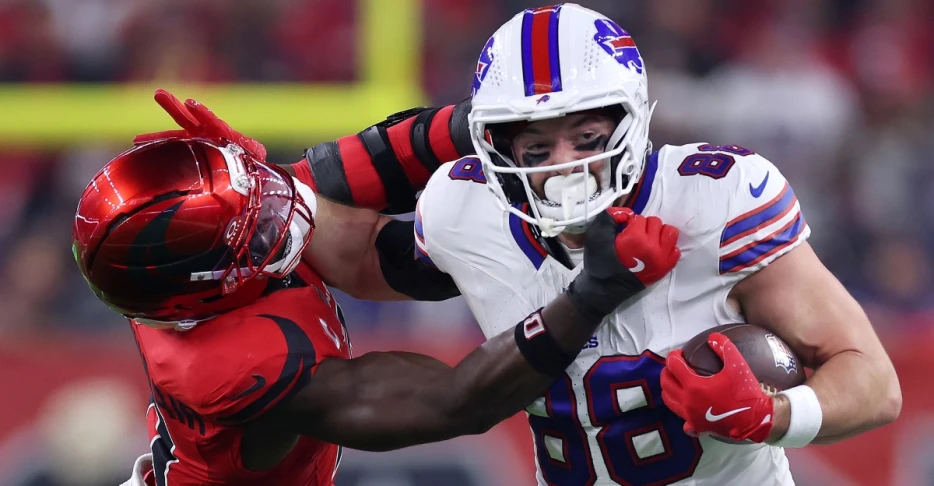
 Buffalo Rumblings
Buffalo Rumblings
The Buffalo Bills haven’t had much success in Houston, and that trend continued during an ugly Thursday Night Football “performance.” Down four at the half, the defense clamped down after the break and only allowed three additional points. The offense had six drives to work with and only came up with three of their own points.
Having the game within striking distance for so long and seeing the futility is one of the worst feelings. If it weren’t for penalties, the game may not have been so close.
This game is a good illustration of the natural flow of most games. It felt like there were a ton of flags, but both teams hovered within the realm of normal. In this measure, Buffalo appears to have gotten the worse of it from the officiating crew, but I wouldn’t have invented a proprietary metric to red flag the yellow flags if I thought that these numbers told the whole story.
Using the league data (left hand bars) for assessed yards, the Bills are still falling behind the Texans. Not drastically, and almost perfectly in line with league average. As we drift toward more advanced measures that will lead to my proprietary Harm stat, we see that the true yards start to indicate there might be some deeper things going on.
True yards adds in yards impacted or negated by penalty in addition to what the box score shows from assessed. The Bills added one yard in this manner, but the full story is a bit more complex (see below). The Texans impacted a whopping 30 additional yards — a 75% shift in the total.
For anyone joining us for the first time, penalty Harm is a “red flag” system for the yellow flags. Numbers aren’t intended to be absolute in nature (a 2 does not mean twice as bad as 1 for instance). Higher spikes are meant to show flags more worthy of scrutiny due to a higher likelihood of impact. By factoring in lost yards, downs, and points the idea is to create a stat that highlights some quick context.
For the Houston Texans, you can see there’s one flag we have to talk about and it’s not the delay of game, false start, or ineligible downfield pass by offensive tackle Tytus Howard. For quick hits, the other ineligible downfield pass by center Jake Andrews wiped out an eight-yard pass on top of the five yards assessed. The holding call on offensive tackle Trent Brown wiped out a seven-yard scramble. Now on to the obvious one…
You likely remember the illegal blindside block by defensive end Derek Barnett. It (thankfully) wiped out the scoring portion of Josh Allen’s pick six. It also wiped out 15 yards of the interception return. For the formula lovers, that’s 15 yards + 15 yards + 7 points; 1.5 + 1.5 + 7.0 = 10.0 Harm....